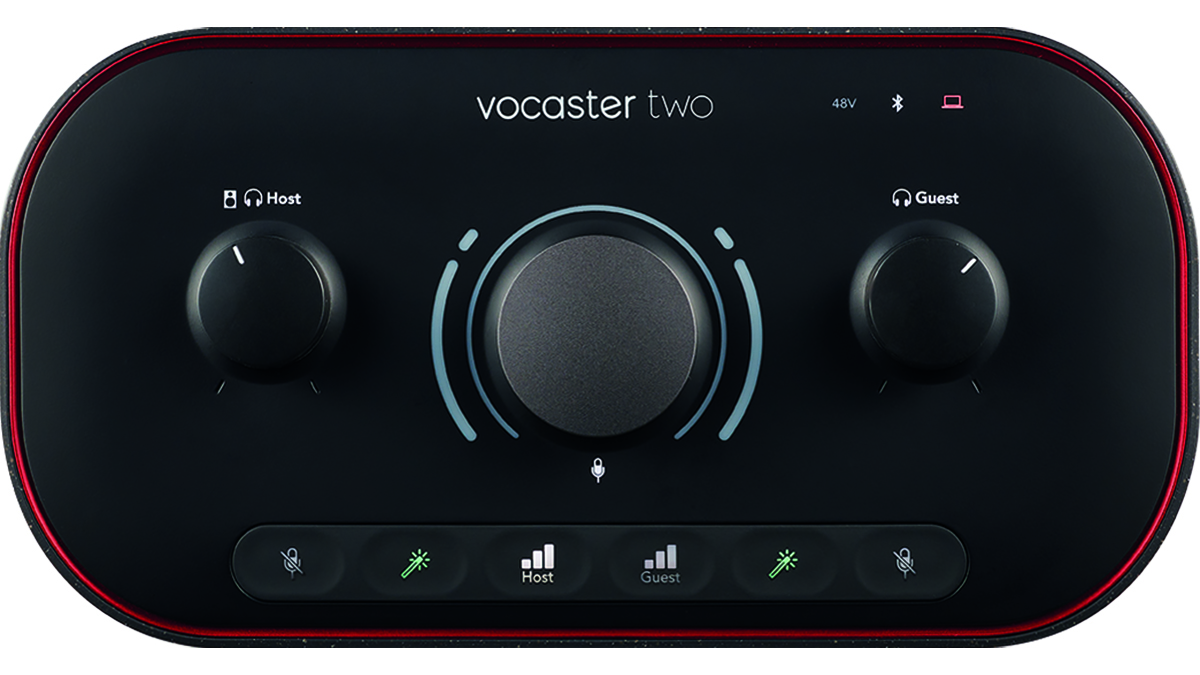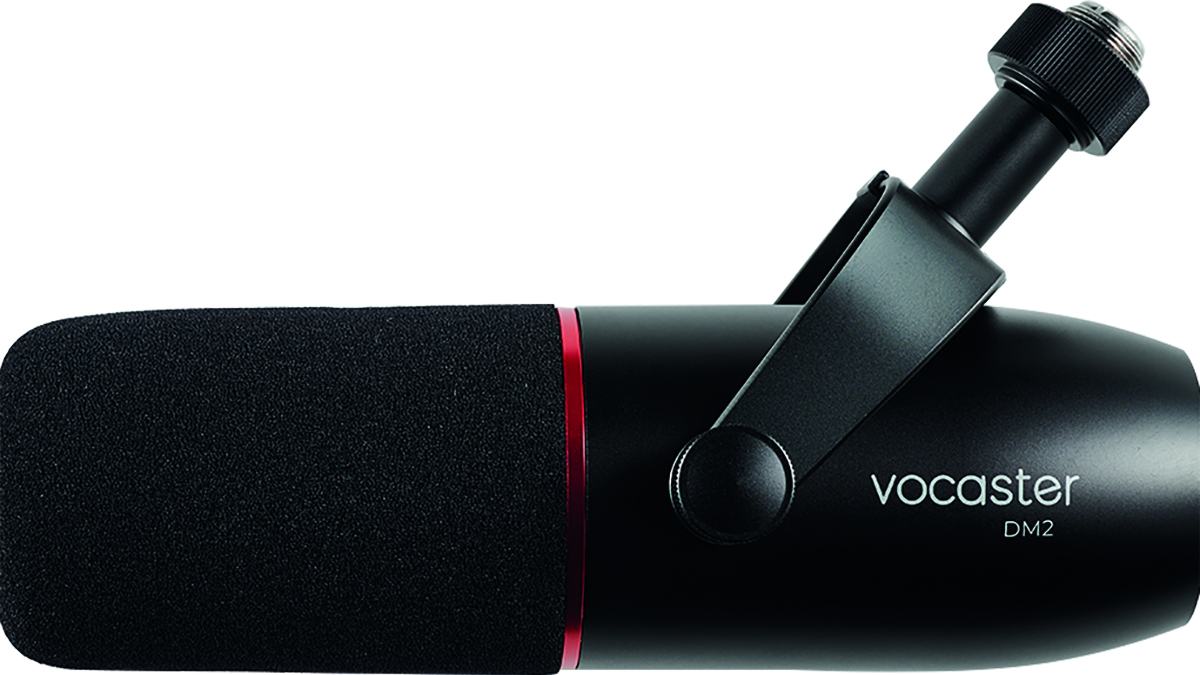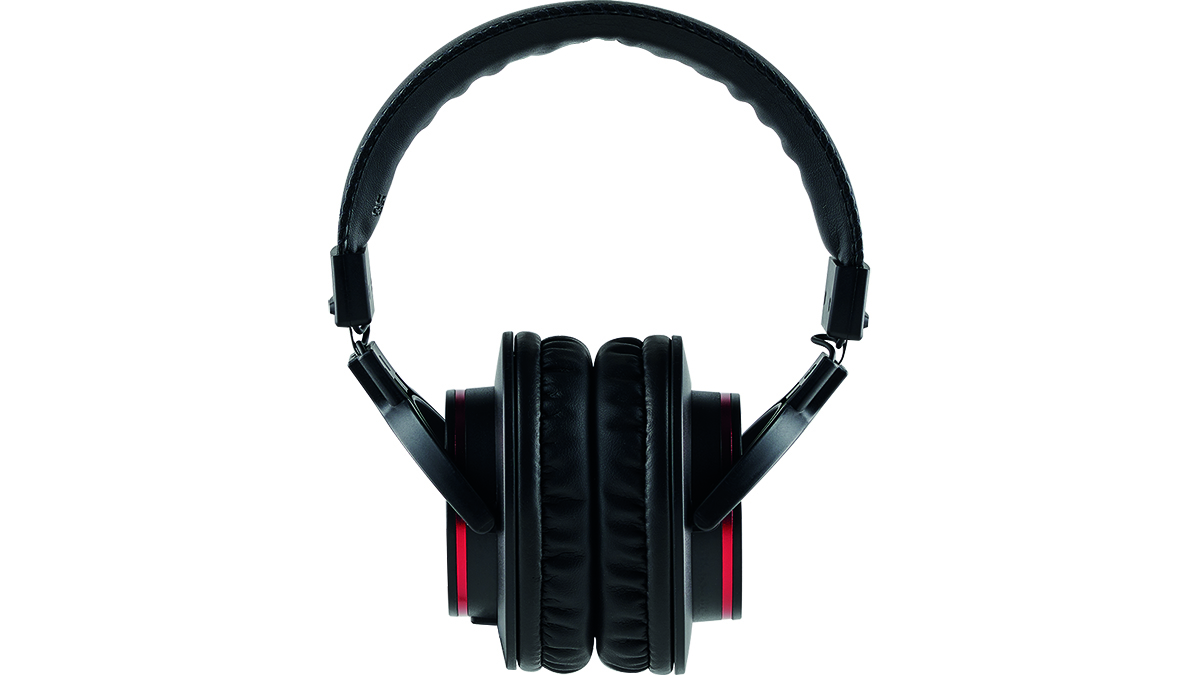MusicRadar Verdict
If you need to get your podcast running quickly, then this kit is a no-brainer. The more tech savvy may prefer another solution.
Pros
- +
Well-designed, complete solution for amateur podcasters.
- +
Phone input, camera output and loopback are all hugely useful features.
- +
Plenty of clean gain for sensitive dynamic microphones.
Cons
- -
Combi inputs would have been a better choice than just XLR.
- -
Pretty much dumbed down software.
MusicRadar's got your back
Focusrite Vocaster Two Studio: What is it?
Spotify added 1.2 million podcasts in 2021, bringing the total number on its platform to more than four million. That’s just one platform. Add in the other big hosts.
That’s a lot of podcasts, and a good deal of new entrants, most of whom won’t have any production skills. If, like them, you’re more focused on content than you are on technical production you’re going to want a simple recording system that just works. Press a button, two at the most, job done.
Which is where Focusrite’s Vocaster Two Studio comes in. As the name suggests, it’s a neatly packaged podcasting kit aimed squarely at amateurs looking for a complete solution. Its sister kit, the slightly cheaper Vocaster One Studio, is a single channel option for solo creators but, if you can afford it, the twin channel Vocaster Two will future-proof your investment. At some point you’ll want to record a guest, and the additional channel lets you do that.
The kit comprises a two channel Vocaster Two interface, a DM14v dynamic mic, a pair of HP60v headphones, an XLR cable, a USB-C to USB-A cable and a portfolio of podcasting software. The interface, microphone and headphones all appear very pro in black, a look unified by a matching set of subtle red metallic stripes.
The obvious omissions are an additional mic, a second pair of headphones and cabling for a guest. However, the Vocaster Two Studio isn’t cheap so we're guessing these items would have pushed the price beyond the level most newbies are willing to invest.

The Vocaster Two looks more like a posh consumer-orientated bit of tech than most interfaces. Its attractive pebble-shaped form is laced with seductive, tactile plastics and smooth, integrated buttons, something of a far cry from the brutal, rectangular metal bricks that we’re used to seeing.
Round the front are two 1/4”headphone outputs, one marked Host, the other marked Guest. Spinning it around, the back panel features two XLR inputs, two 1/4” TRS-balanced speaker outputs, a 3.5mm TRRS phone input, a 3.5mm TRS camera audio out, a 48V phantom power button, a Bluetooth button and USB-C port (USB-3).
Want all the hottest music and gear news, reviews, deals, features and more, direct to your inbox? Sign up here.

The smooth, matt black top panel, which unfortunately picks up finger-marks rather too easily, has a giant central rotary input level control, flanked by two volume controls for the headphone and speaker outs. Sitting nice and tidily in a strip below these are found a mute button, an enhance button and an auto-levels button for each channel.

The bundled mic
The included DM14v is reminiscent of a streamlined Shure SM7B, arguably the best podcasting mic, bar none. Just like the Shure, it’s a low sensitivity dynamic mic that’s excellent at rejecting unwanted noise but does demand a lot of clean gain. As mentioned elsewhere, the Vocaster has more than enough on tap. It’s a basic XLR mic with no on-board EQ controls, but that’s no bad thing here: there’s no setup required. Just like the SM7B, it does feature a built-in pop-filter, windshield, internal shock mount and sturdy mount bracket that’ll work with any stand or boom. It’s a weighty beast too, with a tough all-metal construction. We were really impressed with the sound, especially the mid-range where the voice sits. Unsurprisingly for a dynamic, it’s not detailed but has a flat response with little colouration and enough warmth.

The bundled headphones
After enjoying the quality of the mic, the HP60v closed back headphones are a little underwhelming. The build quality is alright, they’re comfortable enough and they do the job sound-wise. We just fail to understand why Focusrite has bundled a pair of on-ear cans when clearly an over-ear pair would do a much better job of isolating potential sound bleed. Perhaps it’s because these offer a more universal fit, but they’d be the first thing we’d swap out for something more suitable.
Focusrite Vocaster Two Studio: Performance and verdict
Basic operation couldn’t be easier. Plug in your mic, hook up the interface to a laptop (or USB-C equipped iPad), launch your DAW, don your headphones, set the gain level and speak. Just like most interfaces in that respect.
However, the Vocaster Two has half a dozen standout features that make it particularly attractive to amateur podcasters. Auto-gain is a feature commonly found on interfaces, but nevertheless it’s good to see it here because it removes much of the faffing and anxiety from getting a decent recording. Press and hold one of the two input gain buttons for ten seconds while speaking into the mic, and it’ll then automatically set the level for that particular channel.

• Universal Audio Volt 276
UA’s new generation of audio interfaces comes in two flavours: the top-mounted-control of the ’76 range works for podcasters and producers alike and you’ll be glad for that extra compressor.
• t.akustik Podcast Bundle
Perhaps an ideal companion to the Volt 276 is this bundle from Thomann’s t.akustik brand which adds all the extras you need to start creating your own podcasts.
• Tascam Mixcast 4
More than just an audio interface aimed at podcasting, the Mixcast 4 is designed as a multichannel mixer for all your podcasting needs. For more hands-on control, you’ll need to stump up extra.
Talking of gain, the Vocaster can provide up to 70dB, which is enough to drive the most sensitive dynamic mics out there without resorting to a Cloudlifter. Podcasters favour dynamic mics for their noise rejection potential, so this is a real boon.
The phone input and output, either via cable or Bluetooth, is heaven sent. We can’t think of a podcaster who doesn’t occasionally interview guests over the phone, so this feature will be well used. Similarly, the camera out is a blessing for the many podcasters who also stream or post their podcasts to YouTube. It provides instant syncing and could prove a real time-saver.
Finally, the interface ships with Vocaster Hub software, which enables you to control all the aforementioned features in an intuitive, graphic-heavy, tech-lite way. It’s also the place to fine-tune your levels for the best possible mix. Yes, the software may be easy to understand but it’s a bit too dumbed down for our liking. For example, the gain level indicators will display green, amber and red for clipping, but there’s no scale. Call us old-fashioned, but we like to know where -12dBFS is...
On the plus side, the software does reveal an additional feature, loopback. This enables you to record the output of your computer, which is useful for including everything from backing tracks, intros and outros to pre-recorded interviews.
As well as the Hub utility/mixer the Vocaster Two Studio ships with Hindenburg Lite podcaster and radio recording software, plus trial subscriptions to Squadcast and Acast. Essentially, Squadcast is a cloud recording suite and Acast is a podcast hosting platform. Whether you decide to continue with these subs or not, Hindenburg is a solid piece of recording software, or you can, of course, use your own DAW.
MusicRadar verdict: If you need to get your podcast running quickly, then this kit is a no-brainer. The more tech savvy may prefer another solution.
Focusrite Vocaster Two Studio: The web says
"If you’re looking for an all-in-one audio recording package to get your pod/video casting career up and running, the Vocaster Two Studio is an excellent choice."
Macworld
Focusrite Vocaster Two Studio: Hands-on demos
FocusriteTV
Radio.co
Podcastage
James Mulvany
Focusrite Vocaster Two Studio: Specifications
- KEY FEATURES I/O: Comprehensive podcast production kit with twin channel Vocaster Two interface, DM14v dynamic mic and HP60v headphones. Vocaster Two interface: 2 XLR mic inputs, mic input gain range: 70dB, mic input frequency range: 20Hz – 20kHz, stereo phone input & output via 3.5mm TRRS socket, stereo camera output via 3.5mm TRS socket, Bluetooth: v5.0 Vocaster Hub production/mixer software included.
- CONTACT: Focusrite
When Simon's childhood classical guitar teacher boasted he 'enjoyed a challenge', the poor man had no idea how much he'd underestimated the scale of the task ahead. Despite Simon's lack of talent, the experience did spark a lifelong passion for music. His classical guitar was discarded for an electric, then a room full of electrics before Simon discovered the joys of keys. Against all odds, Simon somehow managed to blag a career as a fashion journalist, but he's now more suitably employed writing for MusicRadar and Guitar World. When not writing or playing, he can be found terrifying himself on his mountain bike.

